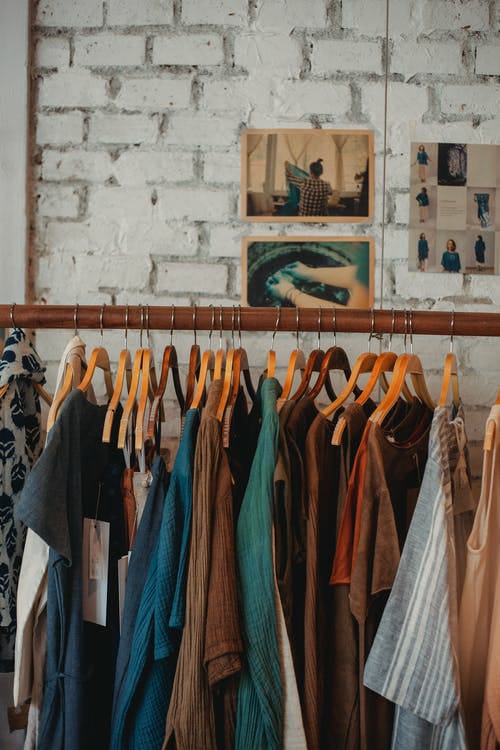Starting a business is not easy, but the estimated costs for the production and other expenses are difficult to handle. Cost amount is the approximate expenses on the buying of resources, and after using those resources, the total cost comes in production. As a seller, your main aim is to lessen the production cost so you can sell those products at a reasonable price with profit.
In the fashion industry, starting a clothing line, you need to analyze your market to learn about the best raw material in a cheap amount. To determine the estimation cost for garments, one should think about all the activities, including the acquisition of textures, sewing, pressing, transport, overheads, and so forth, and about their costs, methods, preferences, and risk factors. Merchandiser should know that there are consistently variations in the expenses of raw materials and embellishments, charges of sewing, preparing, getting done with, sewing and pressing, charges of transport and movement. The technique for causing costing will fluctuate from style to style, as there is a wide range of clothing styles.
There are the following factors that need to consider when doing cost estimation, whether doing producing clothing yourself or working with large-scale overseas clothing manufacturers.
Fabric: Fabric is the most important factor in estimating the costs of a business. If you buy expensive material, you will produce a costly product because it matters the most. And its quality cannot be compromised. Parameters which are used for estimation cost as follows:
UOM: unit of measurement can be in meters or kg, etc. this measurement helps to find out per unit price and the total cost.
MOQ: Minimum order quantity needs to be ensuring that extra and wastage material does not exist.
Order quantity: The quantity that is decided between buyer and seller is the order quantity. It is also considered during estimating the cost. It will help you tell how much raw material you needed.
Incoterm cost: These types of expenses are applied when the fabric is being imported from another country. For example, EXW, FOB, and CIF, etc. These costs help decide the risks of delivery of material and who will be responsible for transportation resources.
Weaving or knitting cost: For weaved pieces of clothing, the Gram Square Meter (GSM) of the fabric assumes an imperative function in costing. The kind of machines, fabrics, mixes, and designs utilized for knitting the fabric of the piece of clothing influences making. Essentially for woven clothes, the Ends per Inch (EPI) are considered. The greater the radiating length, the lesser will be the expense of weaving. Thus, the bar size can increment or lessen the cost of making a piece of clothing. The sorts of weave like twill, silk, and plain and such hardware utilized for the specific clothing piece impact the weaving cost.
Labor cost: The labor cost is a must to calculate whether you are using old machinery or in-house manufacturing. When the number of hours used in styling or designing is multiplied by per hour cost and divided by the number of items or units manufactured, it becomes the formula for basic labor cost calculation.
Creating a product needs many considerations like sizes, colors, or styling. The more things you add, the more expensive it becomes. But for a small business line, you can take a start from just a few items with a variety of sizes.
Trims: Any item other than fabric is used to manufacture a product is called trim. Like threads, elastics, labels, buttons, ribbons, stones, etc., these products are also being purchased externally and needless to generate an effective budget. Trims have their UOMs and MOQs. Make sure to adjust your clothing designs for this. Especially for underwear manufacturing and similar areas, trims are driving up cost.
Value-added services: The producer’s various processes like washing, printing, and weaving for the request for a specific purchaser. Wet handling synthetic compounds comprise of bleaching, softening, and neutralizing processes. Interesting and progressed completes for fabrics can expand the expense of making a piece of clothing.
The above costs consolidate to decide the piece of clothing costing in an association. Be that as it may, each organization has its technique for estimating the expense of making an article of clothing. Following are the type of cost calculations used in the textile industry
1. Occupation costing: The costing procedure assesses the expense of each task turn out finished for a specific request and charges the expense of occupations for learning the assembling cost of an article of clothing.
2. Clump costing: This technique is much the same as employment costing; the lone distinction is the expense of a group of the article of clothing being created is thought of.
3. Terminal costing: This technique is typically utilized for enormous agreements, wherein contract sheets are kept up for explicit and singular deals.
4. Cycle costing: Useful for deciding the piece of clothing cost in which numerous cycles are included.
5. Departmental costing: For enormous scope makers, the office insightful delivery cost of clothing pieces is a proper technique for computing.






